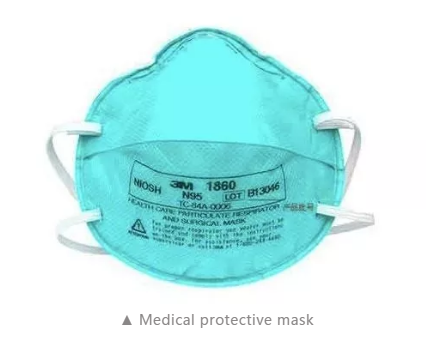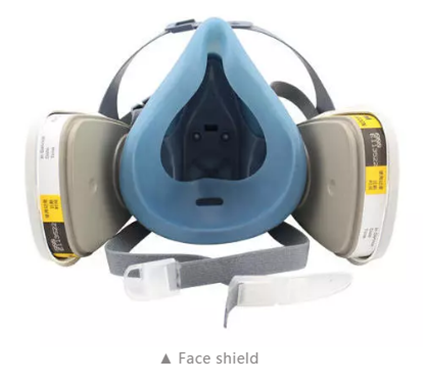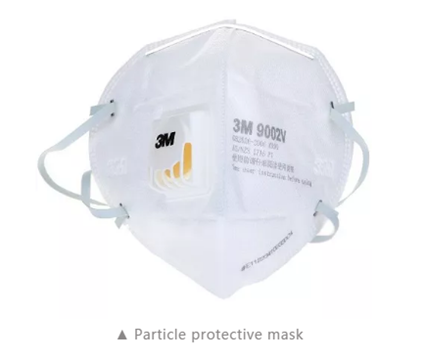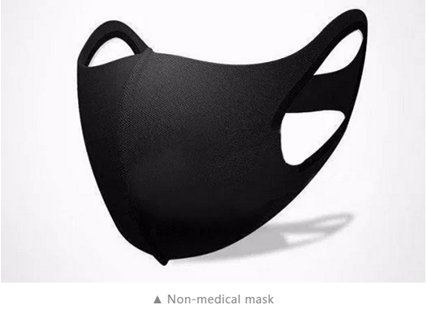The public is recommended to choose the appropriate mask in the novel coronavirus outbreak and to avoid over protection.
Below are some instructions listed in accordance with posts of duty and levels of risk:
I. Individuals subject to high-risk exposure
1. Classification:
(1) All staff working in the wards, ICU and observation rooms of patients with novel coronavirus (confirmed and suspected cases), including clinicians, nurses, healthcare workers, cleaners, and personnel dealing with cadavers, etc.
(2) Doctors and nurses in fever clinics in designated medical institutions of epidemic areas.
(3) Public health physicians who conducted epidemiological investigations on confirmed and suspected cases.
2. Suggestions for self-protection
(1) Wear medical protective masks.

(2) Wear goggles and a face shield when giving first aid treatment to infected patients or performing tracheal intubation and bronchoscopy.

(3) When medical protective masks are in short supply, they can be replaced by particle protective masks conforming to N95/KN95 and higher standards, or self-priming filter respirators (full or half face type) with a cotton filter for particle prevention can be selected. The protective effect of the powered air supply filter respirator is better.

II. Individuals subject to relatively high-risk exposure
1. Classification:
(1) Medical staff providing emergency services, etc.
(2) Public health physicians conducting epidemiological investigations or having close contact with patients.
(3) Environmental and biological sample testers exposed to the epidemic.
2. Suggestions for self-protection
Use N95/KN95 masks or masks of higher standards that can protect people from particulate matters.
III. Individuals subject to medium exposure risk
1. Classification:
(1) Medical staff working at general outpatient departments or wards.
(2) Staff working at densely populated places, including relatively closed places such as hospitals, airports, railway stations, subways, public transit, planes, trains, supermarkets and restaurants.
(3) Staff engaged in epidemic-related administration, police officers, security guards, couriers.
(4) Individuals under home quarantine and those who live with them.
2. Suggestions for self-protection
Wear surgical masks.
IV. Individuals subject to relatively low exposure risk
1. Classification:
(1) The public in such densely populated places as supermarkets, shopping malls, vehicles and elevators.
(2) Offices.
(3) Patients at medical institutions (except fever outpatient departments).
(4) Children and students engaged in collective learning or activities in nurseries, kindergartens or schools.
2. Suggestions for self-protection
Wear disposable medical masks (equivalent products for children)

V. Individuals subject to low exposure risk
1. Classification:
(1) Residents engaged in activities at home or living far from others.
(2) Individuals engaged in outdoor activities, including children and students in open spaces.
(3) Workers in well-ventilated places.
2. Suggestions for self-protection
It is not necessary for individuals to wear masks at home or in well-ventilated places; Non-medical masks, including those containing cotton yarn, activated carbon and sponge also have a protective effect by impeding the spread of droplets arising from coughing, sneezing or speaking.

VI. Information on the use of masks
During the outbreak of novel coronavirus pneumonia, the usage times of masks may be prolonged appropriately on the justification of guaranteeing public health.
1. Replacing
(1) The protective masks of medical standards have expiry dates; each mask should only be used by one person to prevent cross-infection.
Individuals with high exposure risk should change their protective masks when re-entering after finishing work or taking them off for eating or drinking or having been to toilet.
(2) A mask should be changed immediately if it was contaminated by a patient's blood, respiratory/nasal secretions or other body fluids.
(3) Individuals with medium exposure risk should change masks if they have treated patients with highly suspected infection.
(4) Individuals with other classifications of exposure risk may wear a mask repeatedly.
Before putting on a mask, wash hands and avoid touching the inside of the mask.
Replace the mask with a new one as soon as it is dirty, deformed, damaged or has a bad smell.
2. How to keep, clean or disinfect masks?
(1) For reusable masks, hang them in a clean, dry and ventilated place, or place them in clean, breathable paper bags.
Masks should be kept separately to avoid contact with each other and be identified with specific mask users.
(2) Protective masks of medical standards cannot be cleaned or disinfected by disinfectant or heating.
(3) Self-suction filter respirators (full or half face type) or powered air supply filter respirators should be cleaned in accordance with the instructions.
(4) Cotton gauze masks may be cleaned and disinfected. Other non-surgical masks should be handled according to the instructions
Ⅶ. How to wear a mask?
(1) Before putting on a mask, wash hands with alcohol-based hand rub or soap and water.
(2) Cover mouth and nose with the mask and make sure there are no gaps between your face and the mask.
(3) Avoid touching the mask while using it; if you do, clean your hands with alcohol-based hand rub or soap and water.
(4) Replace the mask with a new one as soon as it is damp and do not re-use single-use masks.
(5) To remove the mask: remove it from behind (do not touch the front of the mask); discard immediately in a closed bin; wash hands with alcohol-based hand rub or soap and water.
